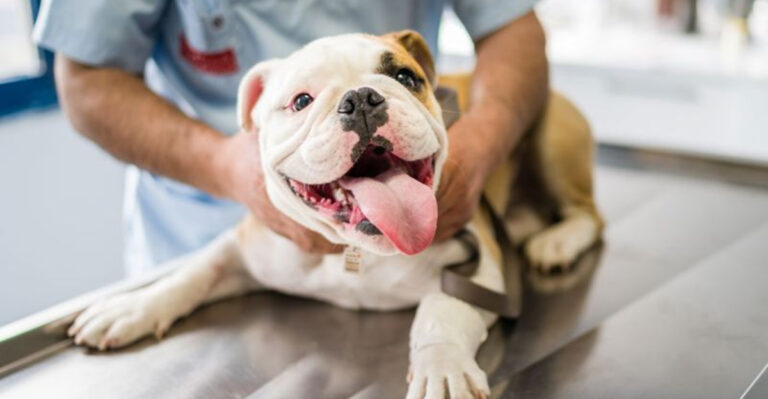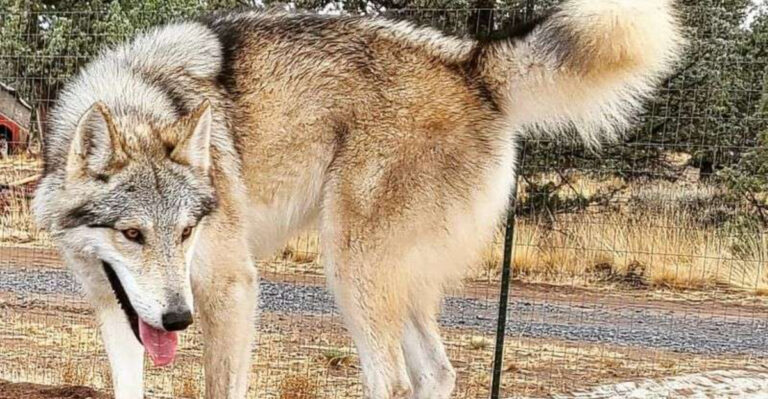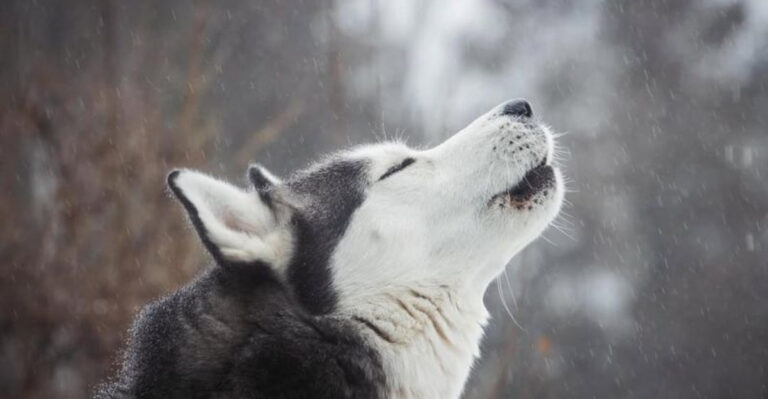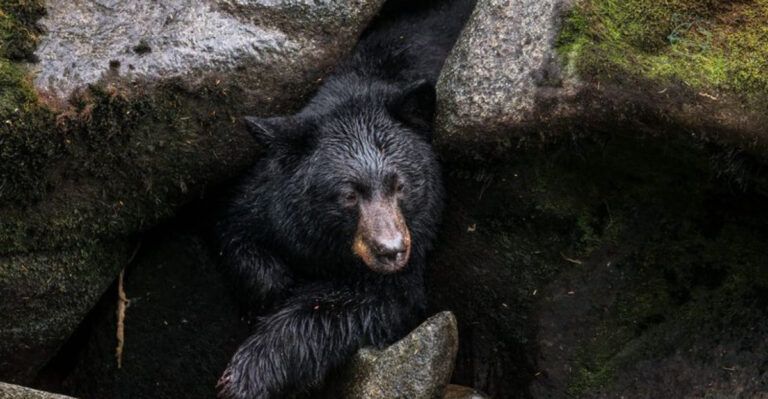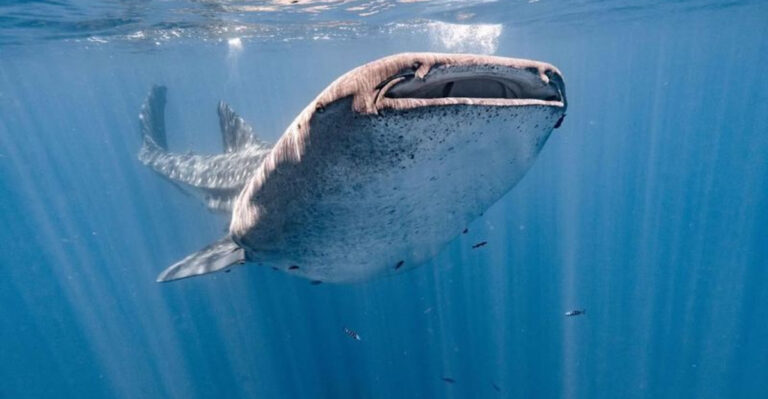12 Signs Your Cat Sees You As Home – Not Just A Provider
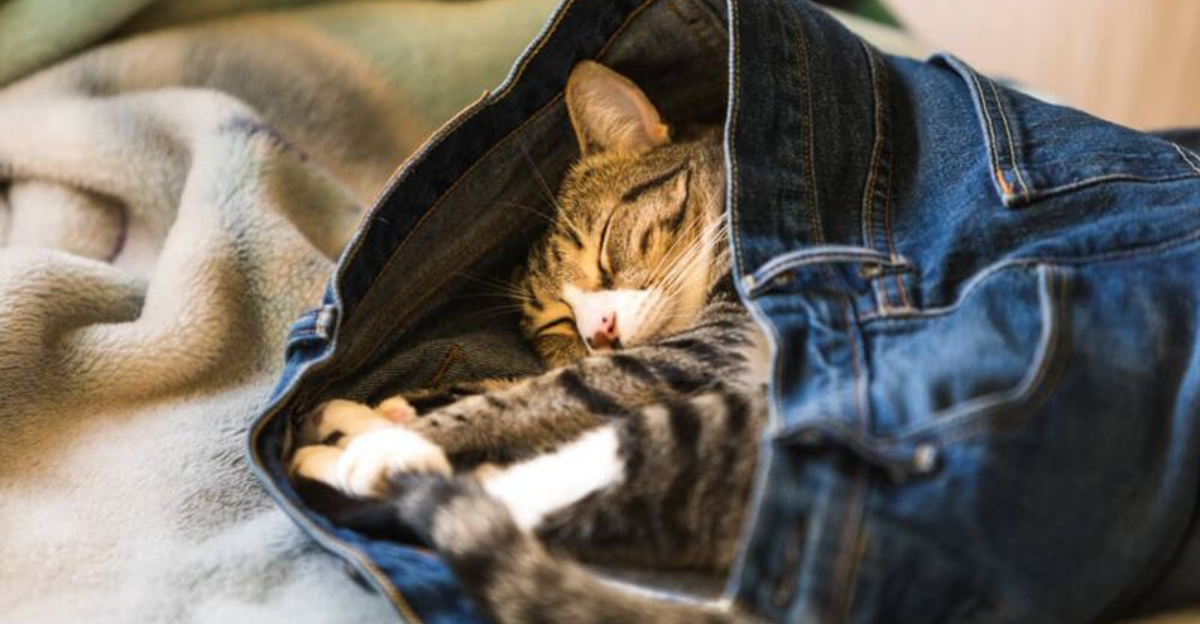
There’s a special moment when you realize your cat doesn’t just tolerate you for food and shelter. Cats, those mysterious furry companions, actually form deep emotional bonds with their humans.
While they might seem independent, they show their attachment in subtle, heartwarming ways. Let’s explore how to tell when your feline friend sees you as their true home, their safe space in this big, scary world.
1. Slow Blinks Of Affection
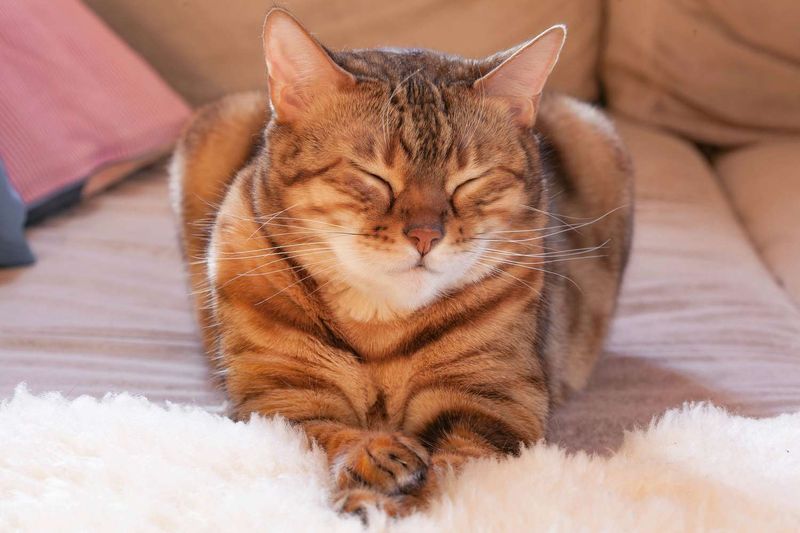
Those dreamy, half-closed eyes aren’t your cat being sleepy. When your feline friend gives you slow blinks, they’re sending kitty kisses your way! This gesture signals deep trust and contentment.
Cat behaviorists call this the “eye kiss” – it’s one of the most sincere forms of feline affection. In the wild, closing eyes means vulnerability, so your cat is essentially saying, “I feel safe enough with you to let my guard down.”
Try returning the slow blink next time. You’ll be speaking their language and strengthening your bond in a way they truly understand.
2. Headbutts And Face Rubbing
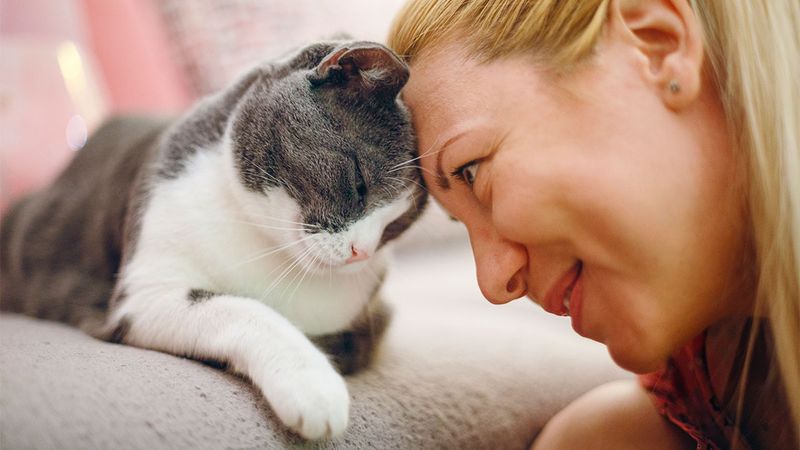
That gentle bump against your leg or face isn’t just your cat being clumsy. They’re actually marking you with scent glands located on their cheeks and forehead, claiming you as their territory.
This behavior, called bunting, is reserved for objects and beings they consider part of their core territory – their home. Wild cats use this same technique to create familiar-smelling safe zones within their territory.
When your kitty headbutts you, they’re essentially saying, “You’re mine, and I’m comfortable enough to make you smell like me.” It’s a profound compliment in cat language!
3. Bringing You “Gifts”
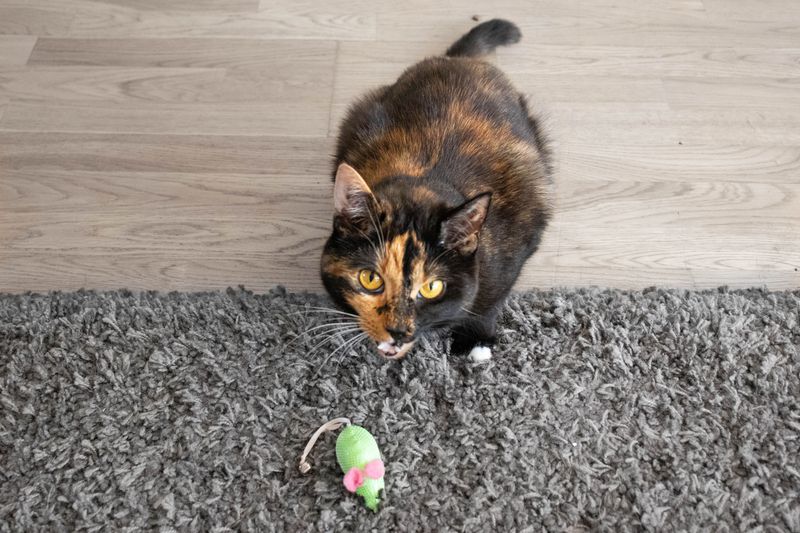
Finding a dead mouse or mangled toy on your doorstep might seem gross, but it’s actually your cat’s way of caring for you. In feline society, bringing prey to others is a nurturing behavior, often what mother cats do for their kittens.
Your cat isn’t just showing off hunting skills. They genuinely believe you might need feeding or could use some hunting lessons! It’s their way of contributing to the family unit.
This behavior indicates they see you as someone worth providing for – a true compliment in their world. Your cat is trying to take care of you just as you take care of them.
4. Kneading Your Lap
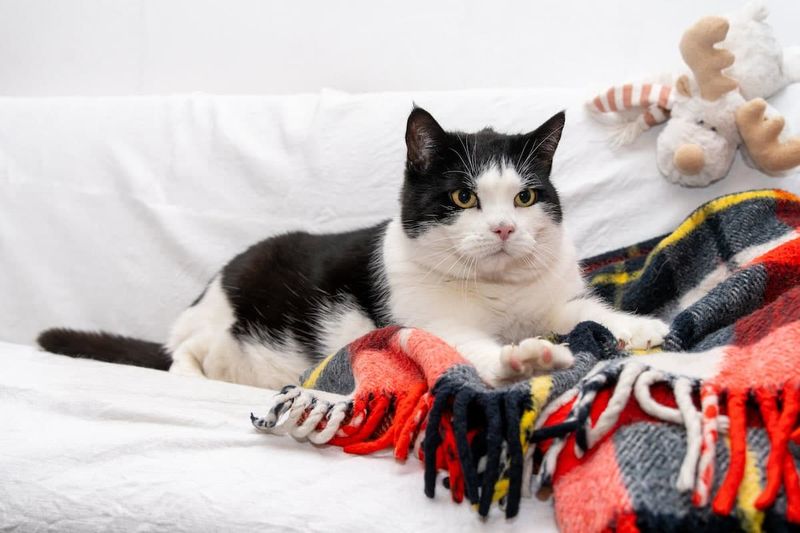
That rhythmic pushing of paws against your lap – sometimes accompanied by purring and a blissful expression – takes your cat back to kittenhood. This behavior, often called “making biscuits,” originates from nursing, when kittens knead their mother’s belly to stimulate milk flow.
For adult cats, kneading is a self-soothing behavior that indicates complete comfort and security. Your lap has become associated with the same feelings of safety they had with their mother.
When your cat kneads you, they’re experiencing a primal contentment that says, “You’re my safe place.” It’s a vulnerable moment showing deep trust.
5. Following You To The Bathroom
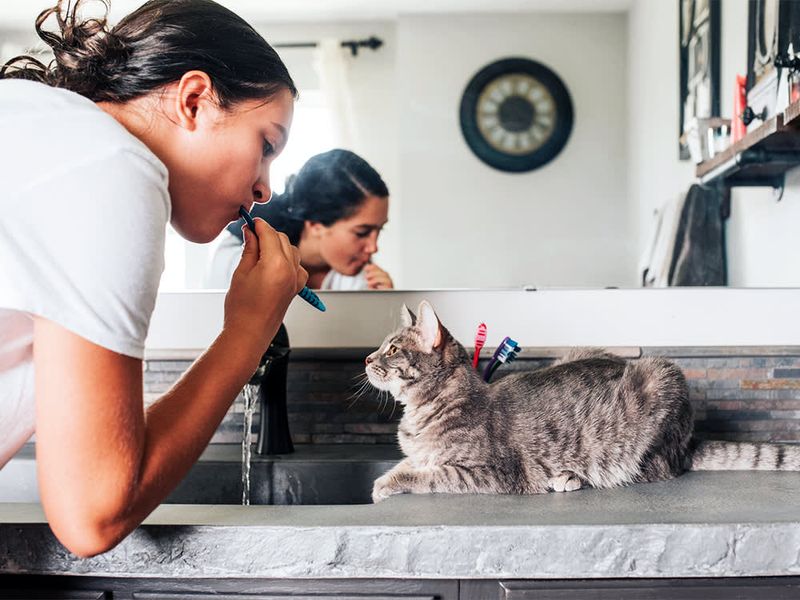
Your feline shadow’s bathroom habits aren’t weird – they’re actually sweet! Cats are most vulnerable during bathroom time in the wild, so they instinctively protect their family members during these moments.
Your bathroom trips represent separation, and your cat simply doesn’t want to lose track of their favorite person. Many cats view bathroom routines as social activities, just as they would participate in grooming sessions with their feline families.
This behavior shows they consider you part of their core social group. They’re not being nosy – they’re keeping you safe and maintaining the close bond that makes them feel secure.
6. Purring While Making Eye Contact
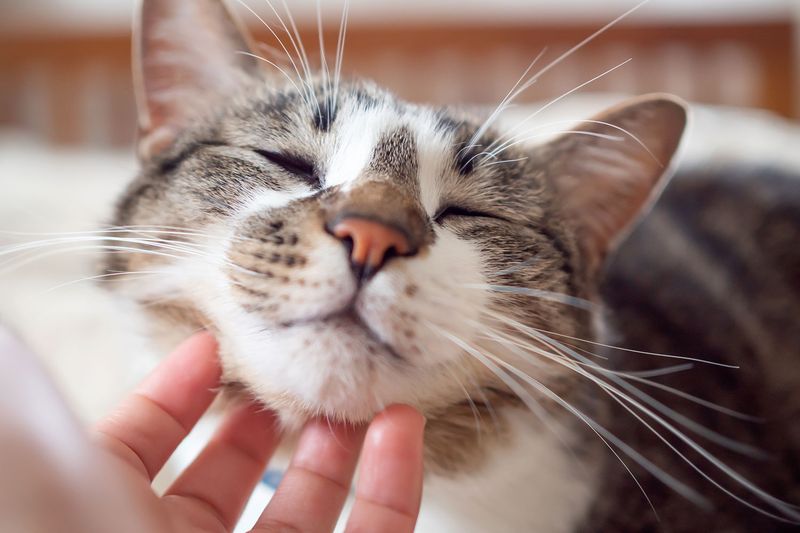
Most cats purr when they’re content, but purring while maintaining eye contact takes this communication to another level. This combination shows they’re not just comfortable in your presence – they’re actively enjoying your company.
Purring requires energy, and cats don’t waste it on individuals they merely tolerate. The sustained eye contact – something cats typically avoid with creatures they don’t trust – demonstrates their confidence in your relationship.
This behavior creates a feedback loop of positive emotions between you both. Your cat is essentially saying, “I see you seeing me, and I’m happy we’re connected.” It’s a moment of mutual recognition that transcends species barriers.
7. Sleeping On Your Clothes
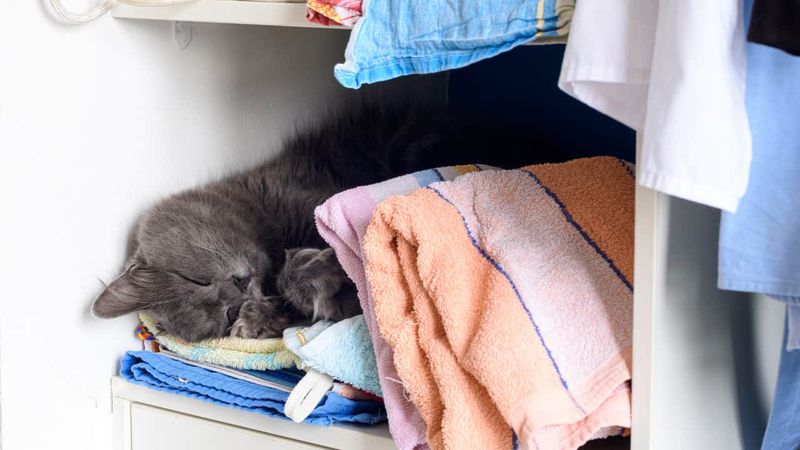
Finding your cat curled up on your laundry pile isn’t just about them seeking soft surfaces. Your clothes carry your unique scent – something deeply comforting to a cat who considers you their home base.
Cats have powerful noses, with 14 times more odor receptors than humans. When they’re feeling anxious or you’re away, surrounding themselves with your scent provides security and emotional comfort.
This behavior is particularly meaningful because cats are scent-driven creatures. By choosing your clothes over other soft spots in the house, they’re essentially wrapping themselves in your presence when the real you isn’t available, like a child with a security blanket.
8. Greeting You At The Door
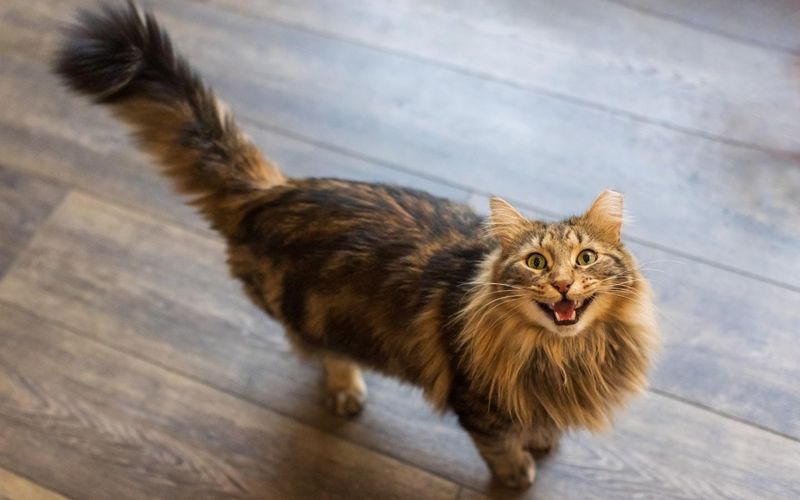
The excited trot, upright tail, and sometimes vocal welcome when you return home speak volumes about your relationship. Unlike dogs, who greet almost anyone enthusiastically, cats reserve special greetings for their inner circle.
This behavior shows your cat has been monitoring your absence and genuinely celebrates your return. The upright, slightly curved tail is a feline expression of delight and friendly intention – a gesture they typically use with other cats they consider family.
Many cats will also vocalize differently for their favorite humans. These special meows and trills are often higher-pitched and more musical than their standard communications, creating a unique language just for you.
9. Exposing Their Belly To You
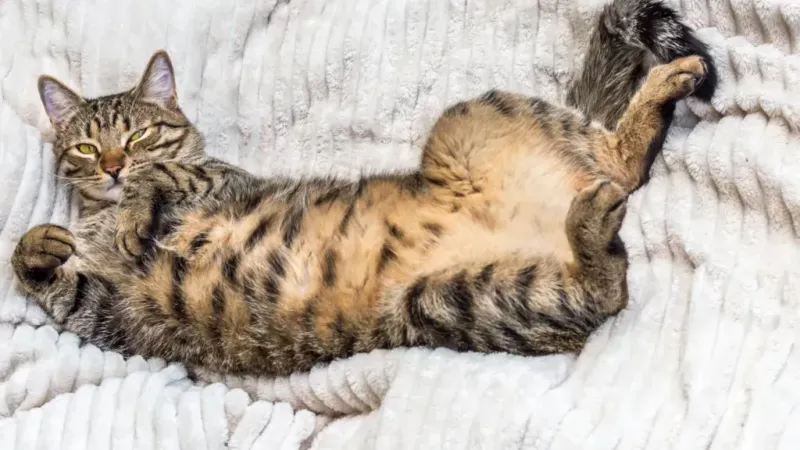
A cat rolling over to show their belly is offering the ultimate display of trust. The stomach is a cat’s most vulnerable area, containing vital organs with little protection. In the wild, exposing this area would be extremely dangerous.
When your cat flashes their fluffy belly, they’re demonstrating they feel absolutely secure in your presence. They know you won’t hurt them, even when they’re completely defenseless.
Interestingly, this doesn’t always mean they want belly rubs! The gesture itself is the message – “I trust you completely.” Whether they tolerate actual touches depends on the individual cat, but the vulnerable display itself speaks volumes about their comfort with you.
10. Grooming You
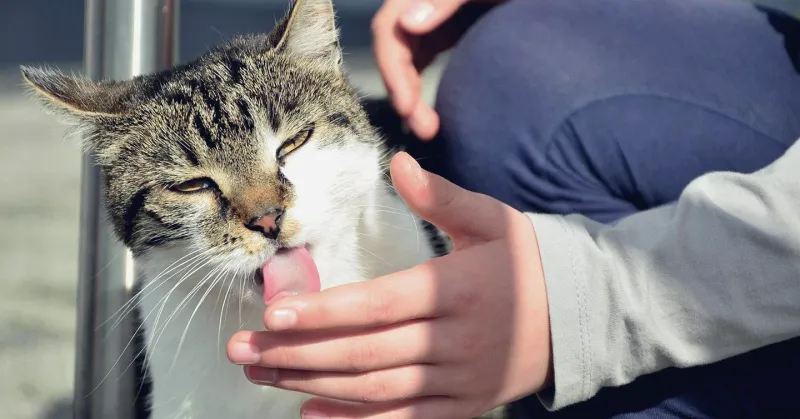
Those rough-tongued licks on your hand or face might seem strange, but they’re actually a profound compliment. Mutual grooming, called allogrooming, is reserved for members of a cat’s closest social circle – their colony or family.
When your cat licks you, they’re treating you exactly as they would treat another cat they love. This behavior strengthens social bonds and demonstrates deep affection in the feline world.
The act requires your cat to share their scent with you while picking up yours, creating a group scent that identifies you both as family. It’s their way of saying, “We belong together,” and is one of the highest honors a cat can bestow.
11. Choosing Your Lap Over Warm Spots
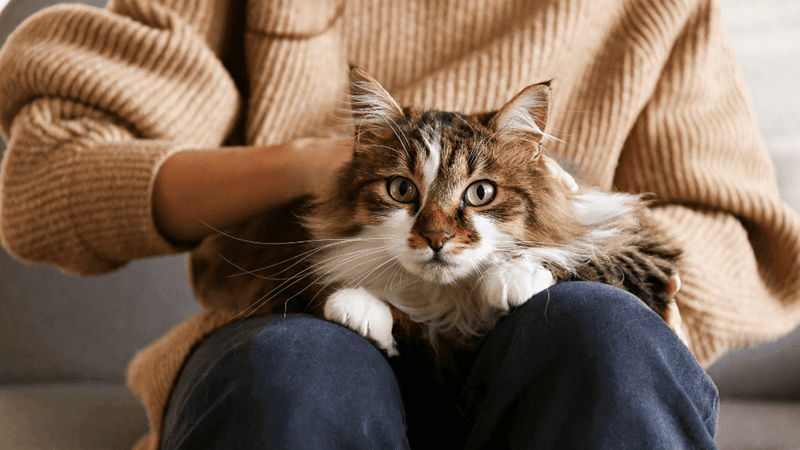
Cats are notorious heat-seekers, naturally drawn to sunny windowsills and warm appliances. When they bypass these prime warming spots to curl up on your lap instead, they’re making a meaningful choice.
Your lap might not be the warmest option available, but it offers something more valuable – a connection with you. This preference shows they value comfort and security from their human over pure physical comfort.
Next time your cat chooses you over the sunny spot or heating vent, remember they’re making an active decision. They’re saying, “Your presence gives me something even better than warmth – it gives me emotional security and companionship.”
12. Staying Close During Illness
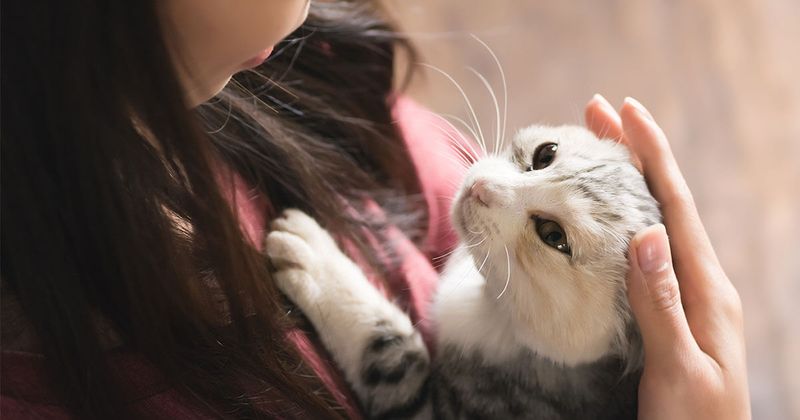
Many cat owners report their feline friends become extra attentive when they’re sick or upset. This isn’t a coincidence – cats can detect subtle changes in your body chemistry, behavior, and routine that signal something’s wrong.
Some cats will position themselves on the specific body part that’s hurting, like lying across a sore stomach or painful joint. Others simply stay closer than usual, offering silent companionship during recovery.
This nursing behavior demonstrates your cat doesn’t just see you as a provider – they actively care about your well-being. They’re responding to your discomfort with the same protective instincts they would show toward a vulnerable member of their colony.

